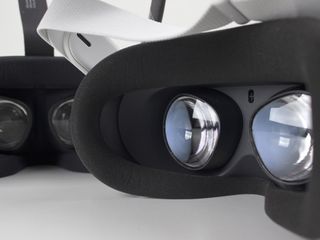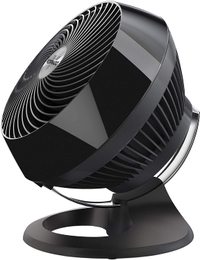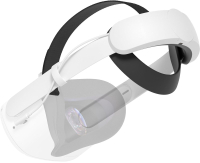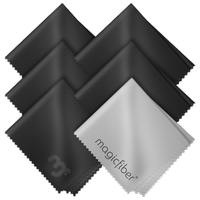How to keep your Oculus Quest 2 from fogging up
Clear screens ahoy

The Oculus Quest 2 has a fogging problem. It's a common complaint on Reddit and VR forums, and something our own staff has encountered when playing active games that get you sweaty. Thankfully, there are some documented solutions to the problem, though some will require buying accessories. We're here to explain why your Quest 2 fogs up, and how to keep your Quest 2 from fogging at all.
What causes lens fogging to VR headsets?
You know how your car windshield fogs up on a cold morning? The same issue happens with your VR headset. Your lenses sit at room temperature, so when it suddenly comes in contact with a 98-degree Fahrenheit, sweaty forehead just a few inches away, the difference in temperature translates into condensation. Add in sweat from workout apps, an overly-warm foam interface, and a tight seal around your nose that blocks both light and fresh air, and it's no wonder your lens keeps fogging up!
Despite all that, Oculus Quest 2 fogging shouldn't be a persistent problem if you have the right strategies and equipment. Let's dive into a few!
Warm up the headset

Quest 2 fogging comes from a difference in temperature, so the most common solution is to pre-heat your headset before starting to play. Place your Quest on your forehead for 5–10 minutes at an angle, without actually starting to play anything. It'll heat your lenses up with your body heat naturally, without getting nearly as sweaty.
If you're feeling impatient, you could also heat it up manually with a hairdryer. Just don't turn it to be too hot, or let stray hairs blow onto the lens.
Use a cooling fan
Until you've gotten more comfortable with VR (or gained your "VR legs"), using a headset for an extended period of time is bound to get you feeling sweaty and uncomfortable. A natural solution is to keep your body artificially cool. Turn your central air or window unit to a comfortably low temperature, then use a directional fan to blow air directly onto the uncovered portion of your face. The larger the fan, the better, since the best Oculus Quest 2 games will have you dancing and bobbing away from the airflow's path.
This model comes in several sizes depending on your budget and room size. There's even an option to voice-activate it with an Alexa speaker so you don't have to take off your headset. It's powerful, with four speed settings depending on how hard you're working out.
Buy From: Amazon (opens in new tab)
Try a new facial interface replacement

The default foam interface is so terrible that Oculus did a voluntary recall of it, sending people a replacement silicone cover. But beyond giving your skin a rash, the new gasket doesn't let in much air flow, contributing to the Quest 2 fogging. But if you look at some of the best face cover alternatives, you'll see several with better nose vents designed specifically to prevent fogging, along with some custom pads with cooling material to make you more comfortable. One of those models should hopefully let you bid "adieu" to fogging.
For example, why not try out the KIWI Facial Interface for Quest 2? The comfy leather padding, an upgraded nosepiece and improved glasses spacer make it much more comfortable than the stock Quest 2 offering, while redesigned vents help generate a greater degree of airflow as well as reducing fogging. The addition of a sweat-absorbing foam pad is a nice touch, and keeps your face cool during longer VR sessions.
This facial interface is how Oculus should have designed the standard Quest 2 one, with a soft leather material and better venting than what we got. KIWI knocked it out of the park with this, and also features an improved nosepiece, and redesigned vents.
Buy From: Amazon (opens in new tab)
Glasses-wearers: try lens inserts
Some bespectacled Quest 2 users complain that it's not the headset's lenses that fog, but their own. We hope all the options on this list will help you solve that issue, but if it's a persistent problem, you could invest in some prescription VirtuClear lens inserts to replace the stock lenses. This'll ensure you can see your favorite VR games clearly without having to squeeze your glasses inside.
Adjust your fit

This might seem simplistic, but you may simply be wearing the Quest 2 too tightly in order to reduce light bleed. That'll increase sweat against the interface and decrease necessary air flow. Leave a bit of gap between the headset and your nose. Yes, it'll let a bit of light in, but also hopefully let in more cool air.
Of course, wearing the Quest 2 more loosely can be a problem if you're using it for more active experiences. Some of us still comfortably use the default strap this way, but if you want an upgrade, try the Elite Strap or one of the best Elite Strap alternatives. Any of them can keep the headset on more securely, but still leave room around your nose. Some people also say that fogging reduced for them after adding the glasses spacer or a new Fit Pack option, though we can't personally attest to that.
The Quest 2 Elite Strap replaces the standard strap that ships with the headset. It's also more ergonomic, so you can be more comfortable while also reducing fogging.
Buy From: Best Buy (opens in new tab)
Use a microfiber cloth
Sometimes, despite your best efforts, the lenses will get foggy. In that case, you'll want to have a microfiber cloth on hand to clean it off. Hopefully, you'll wipe away the worst of the condensation or smudging, and it'll be slower to build back up next time. You should specifically use microfiber, as anything else could damage the lenses.
That not doing it for you? Various companies sell anti-fog sprays that'll synthetically remove fogging from the lenses. We personally avoid these, as Oculus says not to spray anything on the Quest 2 lenses for fear of damaging it. Some users swear by them; we just think they're not a good long-term solution, regardless.
Any microfiber cloth you use for your glasses will work here. But if you're lucky enough not to need glasses, or you're running low on clean ones, you can snag a bunch of these for a decently low price. Gently wipe the fog away without worrying about scratching your lenses.
Buy From: Amazon (opens in new tab)
Android Central Newsletter
Get the best of Android Central in in your inbox, every day!

Michael spent years freelancing on every tech topic under the sun before settling down on the real exciting stuff: virtual reality, fitness wearables, gaming, and how tech intersects with our world. He's a semi-reformed Apple-to-Android user who loves running, D&D, and Star Wars. Find him on Twitter at @Michael_L_Hicks.
Thank you for signing up to Android Central. You will receive a verification email shortly.
There was a problem. Please refresh the page and try again.



